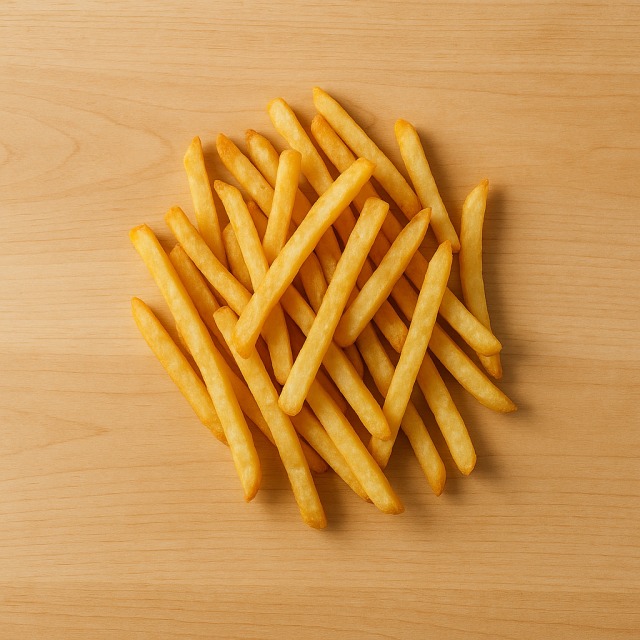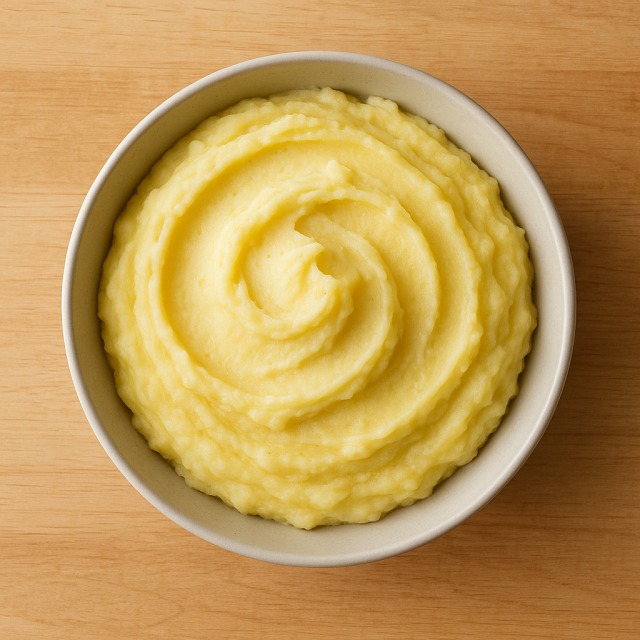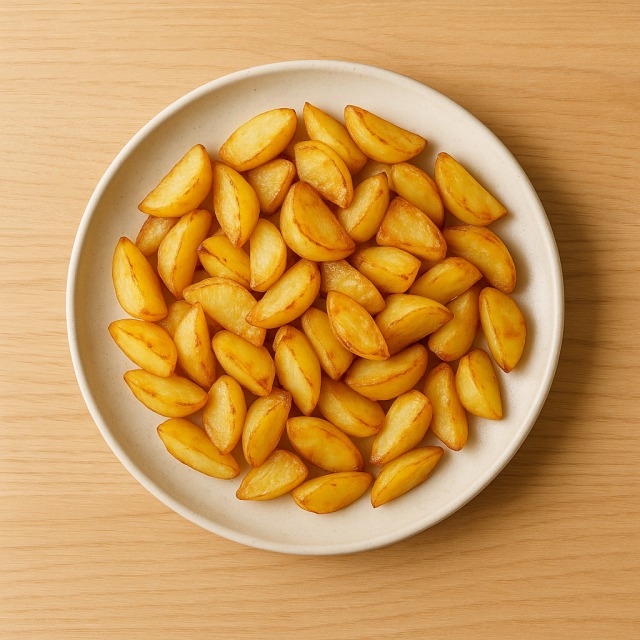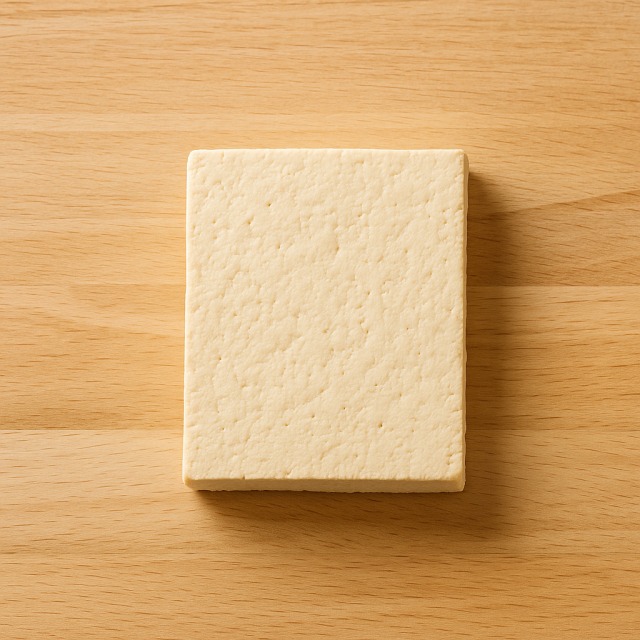Calorie Chart / Trimmings / Deep-fried potato balls
How Many Calories Are in Deep-fried potato balls?
Calculation of the nutritional value & Recommended Dietary Intake of deep-fried potato balls
For g and a calorie requirement of kcal
| Calories 330 kcal | Proteins 7.2 g | Lipids 12 g | Carbohydrates 47 g |
| 17% | 10% | 18% | 17% |
Health benefits of deep-fried potato balls

Deep-fried potato balls - 100g
Calories 165 kcal
Proteins 3.6 g
Lipids 5.9 g
Carbohydrates 23.6 g
Deep-fried potato balls belong to the moderate-calorie family, with fewer calories than classic French fries but more than simple boiled potatoes. Knowing their calorie density helps people who track calories for weight loss or muscle gain.
The basic potato provides potassium, vitamin C (some is lost during frying), vitamin B6, and a small amount of dietary fiber. Potassium contributes to normal blood pressure, while vitamin C supports immune function and collagen synthesis. Even after frying, traces of these micronutrients remain, offering benefits beyond calories alone.
The crisp exterior results from the Maillard reaction, which develops flavor compounds without adding extra calories once the oil has drained properly. Historically, bite-size fried potato preparations appeared in 19th-century French cuisine as an elegant garnish for meat dishes. Today, they are popular in children's menus because their playful shape makes portion control—and therefore calories—easy to visualize.
Although frying introduces lipids, using high-oleic sunflower or rapeseed oil limits saturated fat. Combined with their moderate calories, this makes deep-fried potato balls an occasional treat that fits a balanced diet when portions are controlled and total daily calories are kept in mind.
Tips for incorporating deep-fried potato balls into a balanced diet
Because deep-fried potato balls already supply starchy carbohydrates and moderate calories, pair them with lean protein and fiber-rich vegetables to steady blood sugar and control overall calories. For example, serve a palm-sized fillet of salmon and a side of steamed broccoli; the plate stays colorful while calories remain reasonable.
As an appetizer, offer mini portions (3 or 4 balls) with a pot of chilled tzatziki. The yogurt dip adds protein without excessive calories, and its fresh herbs balance the fried flavor. You can also accompany the balls with a mixed green salad dressed with light vinaigrette, again keeping calories in check.
If you crave a heartier meal, swap the deep-frying for oven-baking: spray the balls lightly with oil and roast at 200 °C. You reduce lipids and calories while retaining crunch. Combine them with grilled chicken breast and roasted carrot sticks for a family supper that delivers controlled calories, quality proteins, and plenty of micronutrients.
Remember portion size: one adult serving of deep-fried potato balls is about 100–120 g (roughly a teacup). Logging this amount in your calorie calculator prevents accidental calorie creep and makes room for a nutrient-dense dessert like a fresh apple without exceeding daily calories.
Frequently Asked Questions
- How many calories are in deep-fried potato balls?
- There are 165 kcal per 100 g.
- Do deep-fried potato balls contain any protein?
- Yes, they offer 3.6 g of protein per 100 g, which can help complete your daily macro and calorie goals.
- Are deep-fried potato balls healthier than French fries?
- They generally contain fewer calories and less fat than standard French fries, especially if well drained, but portion size still matters for total calories.
- Can I reduce calories by cooking them differently?
- Oven-baking or air-frying with a light oil spray can lower fat absorption and therefore calories while keeping a crispy shell.
- Are deep-fried potato balls gluten-free?
- If prepared only with potatoes, oil, and seasoning, they are gluten-free. Breaded versions add flour and raise both carbs and calories, so check labels if you monitor calories or gluten intake.
Similar foods
Information provided by Calorie Menu may contain inaccuracies or errors. It cannot, under any circumstances, substitute medical advice or medication.










